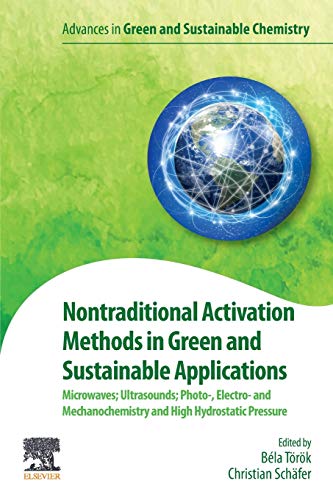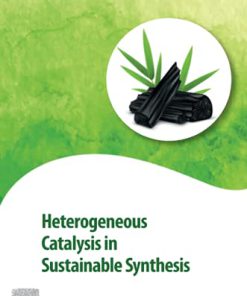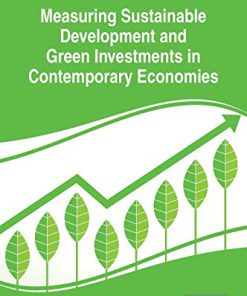Nontraditional Activation Methods in Green and Sustainable Applications 1st Edition Bela Torok, Christian Schafer ISBN 9780128190098 0128190094
$50.00 Original price was: $50.00.$25.00Current price is: $25.00.
Nontraditional Activation Methods in Green and Sustainable Applications 1st Edition Bela Torok, Christian Schafer – Ebook PDF Instant Download/Delivery: 9780128190098 ,0128190094
Full download Nontraditional Activation Methods in Green and Sustainable Applications 1st Edition after payment

Product details:
ISBN 10: 0128190094
ISBN 13: 9780128190098
Author: Bela Torok, Christian Schafer
Nontraditional Activation Methods in Green and Sustainable Applications: Microwaves; Ultrasounds; Photo-, Electro- and Mechan-ochemistry and High Hydrostatic Pressure provides a broad overview of non-traditional activation methods to help readers identify and use appropriate approaches in reducing the environmental impact of their work. Sections discuss the fundamental principles of each method and provide examples of their practical use, illustrating their usefulness. Given the importance of expanding laboratory based technologies to the industrial level, chapters that cover both existing and potential industrial and environmental applications are also included.
Highlighting the usefulness and adaptability of these methods for a range of practical applications, this book is a practical guide for both those involved with the design and application of synthetic methodologies and those interested in the implementation and impact of green chemistry principles in practice, from synthetic and medicinal chemists, to food developers and environmental policy planners.
- Discusses, and critically assesses, the advantages of non-traditional activation methods in green and sustainable chemistry applications
- Features individual chapters written by renowned experts in the field
- Contains extensive, state-of-the-art reference sections, providing critically filtered information to readers
Nontraditional Activation Methods in Green and Sustainable Applications 1st Edition Table of contents:
Chapter One: Application of nontraditional activation methods in green and sustainable chemistry: Microwaves, ultrasounds, electro-, photo-, and mechanochemistry, and high hydrostatic pressure
Abstract
1: Introduction
2: Microwave-assisted organic synthesis
3: Ultrasonic activation
4: Photochemical activation
5: Electrochemical activation
6: Activation by mechanochemistry
7: Activation by high hydrostatic pressure
8: Conclusions
Chapter Two: Activation of chemical reactions on solid catalysts under microwave irradiation
Abstract
Acknowledgments
1: Introduction: What are the issues in applying microwave irradiation to promoting and controlling heterogeneous catalysis?
2: Temperature measurements
3: New trends: Temperature measurements combined with theoretical simulation
4: New trends: Operando observation
5: Structural design of the solid catalyst to control the temperature distribution
6: Precise control of electromagnetic field achieved by solid-state generator of microwaves
7: Toward applications in industries
8: New horizon in special effects: Acceleration of electron transfer on solid surfaces
9: Summary
Chapter Three: Recent advances in multicomponent microwave-assisted Ugi reactions
Abstract
1: Introduction
2: The Ugi-four component reaction (U-4CR)
3: Synthesis of the Boronate derivatives
4: Sequential Ugi reactions: Four- or three-component coupling reaction
5: Conclusions
Chapter Four: Microwave-assisted flow systems in the green production of fine chemicals
Abstract
1: Introduction
2: Microwave reactors
3: Applications of microwave-assisted flow systems
4: Conclusions
Chapter Five: Application of sonochemical activation in synthetic organic chemistry
Abstract
1: Introductory remarks
2: Sonochemistry
3: Using ultrasonic irradiation in synthetic organic chemistry
4: Conclusions and outlook
Chapter Six: The catalytic production of biofuels (biodiesel and bioethanol) using sonochemical, microwave, and mechanical methods
Abstract
Acknowledgments
1: Introduction
2: Biodiesel production using nontraditional methods of activation
3: Can there be alternative to microwave and sonochemical activation for biodiesel production?
4: Bioethanol production using nontraditional methods of activation
5: Conclusion
Chapter Seven: A new color in green chemistry: Photochromic molecular switches as components of multifunctional catalytic systems
Abstract
Acknowledgments
1: Introduction
2: Photochromic scaffolds used in catalytic applications
3: Homogeneous catalysis
4: Biphasic, heterogeneous, and supported catalysis
5: Conclusions and outlook
Chapter Eight: Photochemical rearrangements in organic synthesis and the concept of the photon as a traceless reagent
Abstract
1: Introduction
2: Photochemical position isomerization of heterocycles
3: Photochemical rearrangements induced by electron and hydrogen atom transfer (HAT)
4: Photochemical electrocyclic reactions
5: Photochemical cyclizations
6: Conclusion
Chapter Nine: Electrochemical activation in organic synthesis applications
Abstract
1: Electrifying organic synthesis
2: Electrochemical hardware
3: Electrochemical activation in organic synthesis
4: Conclusions
Chapter Ten: Electrochemical anodic oxidative fluorination and trifluoroalkylation of organic compounds
Abstract
1: Introduction
2: Electrochemical fluorination using NF type reagents
3: Electrochemical trifluoromethylation
4: Conclusions and future outlook
Chapter Eleven: Monitoring mechanochemical processes in situ and in real time
Abstract
1: Mechanochemistry: The ex situ paradigm
2: Time-resolved in situ monitoring by powder X-ray diffraction
3: Time-resolved in situ monitoring by vibrational spectroscopy
4: Combining in situ time-resolved strategies: The tandem approach and beyond
5: Summary
Chapter Twelve: From solution-based nonconventional activation methods to mechanochemical procedures: The hydantoin case
Abstract
Acknowledgments
1: Introduction
2: Enabling Technologies at the service of hydantoin scaffold
3: Miscellaneous methods
4: Conclusions
Chapter Thirteen: Application of mechanochemical activation in synthetic organic chemistry
Abstract
1: Introductory remarks
2: Basics of mechanochemistry
3: Conclusion and outlook
Chapter Fourteen: Sonomechanochemistry
Abstract
1: Introduction
2: Mechanochemistry in context
3: The force of sound
4: Mechanophore activation by sonication
5: Molecular assembly and disassembly
6: Sonocrystallization
7: Outlook
Chapter Fifteen: Diastereo- and enantioselective synthesis by nontraditional activation methods: Ultrasonic, microwave, electro-, photo- and mechanochemically activated reactions
Abstract
1: Introduction
2: Asymmetric reactions in Sonochemistry
3: Microwave-assisted catalytic asymmetric synthesis
4: Asymmetric reactions by electrochemical activation
5: Asymmetric synthesis by photochemical activation
6: Mechanochemical activation: Ball milling in asymmetric synthesis
7: Conclusion
Chapter Sixteen: High hydrostatic pressure in food industry applications
Abstract
Acknowledgments
1: Introduction
2: Difference between HHP and heat
3: Research and development for HHP food processing
4: Effect of HHP on food
5: HHP food processing equipment
6: Cost of HHP food processing46
7: Concluding remarks
Index
People also search for Nontraditional Activation Methods in Green and Sustainable Applications 1st Edition:
non traditional methods of learning
nontraditional activation methods in green and sustainable applications
non-canonical activation
non-activation
differentiation (dna activation) definition
Tags:
Bela Torok,Christian Schafer,Nontraditional Activation Methods,Sustainable Applications
You may also like…
Engineering - Environmental
Chemistry - Organic Chemistry
Chemistry - Technical & Industrial Chemistry
Engineering - Civil & Structural Engineering
Chemistry - Organic Chemistry
Technique - Nanotechnology
Advances in Green and Sustainable Nanomaterials 1st Edition Megh R Goyal
Business & Economics - Economics
Measuring Sustainable Development and Green Investments in Contemporary Economies Mihai Mieila











